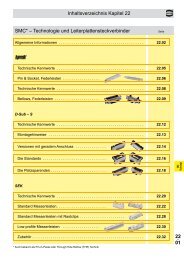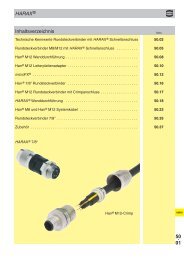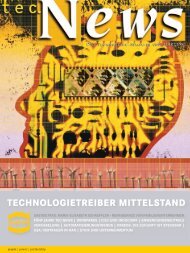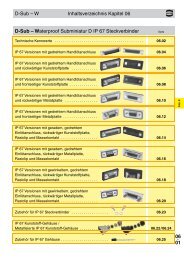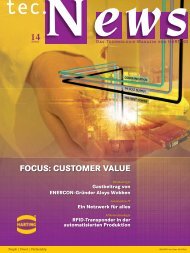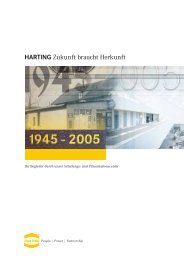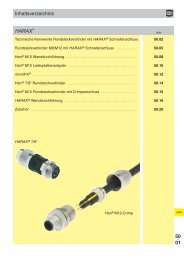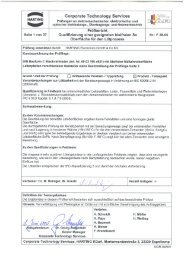tec.News - Harting
tec.News - Harting
tec.News - Harting
Create successful ePaper yourself
Turn your PDF publications into a flip-book with our unique Google optimized e-Paper software.
NGIO archi<strong>tec</strong>ture (Fig. NGIO Forum)<br />
NGIO will probably reach the market<br />
by the end of the year 2000,<br />
while for Future I/O, the market<br />
launch is planned in 2001. The advocates<br />
of Future I/O – incidentally,<br />
the same group as is promoting<br />
the launch of PCI-X – expect that<br />
PCI-X can meet market requirements<br />
for another year or so before<br />
a successor has to be ready.<br />
During this time the Future I/O<br />
specifications will be worked out<br />
in detail.<br />
The competition between the two<br />
development standards will lead<br />
to a wide selection of products,<br />
support services, development<br />
tools and new applications. For<br />
existing mainstream applications,<br />
such as embedded systems or telecommunications,<br />
it is additionally<br />
planned to integrate the new I/O<br />
archi<strong>tec</strong>tures into existing systems,<br />
such as VMEbus and CompactPCI.<br />
The lifetime of the successful<br />
parallel bus systems can<br />
thus be extended, while simultaneously<br />
expanding the network<br />
by scaling from computer to computer.<br />
The initiatives, which aim to create<br />
faster I/O structures are, however,<br />
bringing a completely new<br />
group of suppliers onto the scene.<br />
Companies such as Cisco, Ascend<br />
and 3Com, which offer hubs and<br />
routers for IP applications, have<br />
successfully entered the mainstream<br />
market in a very short<br />
space of time and are now preparing<br />
to compete with the switches<br />
from Lucent, Nortel, Alcatel and<br />
Siemens. Another attack on the<br />
established market players may<br />
come with a totally new – standardised<br />
and scaleable – I/O interface.<br />
For the future SAN market<br />
it will be a completely new game.<br />
Representatives of both I/O<br />
groups are having discussions in<br />
an attempt to overcome political<br />
points of disagreement before the<br />
competing standards split the<br />
market. One matter of dispute is<br />
whether the NGIO group is specifying<br />
the peripheral communication<br />
in the SAN in too much detail<br />
and therefore possibly limiting<br />
competition. On the other hand,<br />
Future I/O plans to set specific<br />
standardisation levels for communication<br />
from ASIC to ASIC, PCB to<br />
PCB and server to server. Initial<br />
promises on the part of Future I/O<br />
tended towards limited specifications<br />
so as to permit reasonable<br />
competition. However, many developers<br />
consider that the standardisation<br />
levels now planned intrude<br />
their differentiation domains.<br />
Users are well advised to look very<br />
carefully at how the industry once<br />
again makes a decisive advance in<br />
terms of speed, I/O capacity and<br />
interconnectivity. What is coming<br />
next? Will the <strong>tec</strong>hnology spiral<br />
continue to turn at the same<br />
pace? Can permanent increases<br />
in performance combined with<br />
reduced space requirement still<br />
be achieved in the future? Whatever<br />
direction developments take,<br />
HARTING is equipped to support its<br />
customers with tailor-made connection<br />
<strong>tec</strong>hnologies.<br />
DAVID K. ROBAK is "Director of<br />
Marketing, Electronic Products" at<br />
HARTING INC. OF NORTH AMERICA in<br />
Elgin, Illinois, USA.<br />
Info-Fax 4007<br />
33<br />
People Power Partnership



